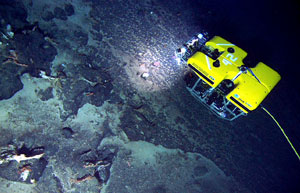STEM Lessons
 In recent years, the education community has launched initiatives to engage students in a new way of learning that focuses on solving real-world problems through hands-on, inquiry-based teaching methods. Education systems are placing increased emphasis on training students to approach problems in science and math more holistically using critical thinking and collaboration. From this philosophy emerged science, technology, engineering, and math (STEM) programs, in which students are challenged to investigate real-world questions that span disciplines using technology as a powerful tool for inquiry and application.
In recent years, the education community has launched initiatives to engage students in a new way of learning that focuses on solving real-world problems through hands-on, inquiry-based teaching methods. Education systems are placing increased emphasis on training students to approach problems in science and math more holistically using critical thinking and collaboration. From this philosophy emerged science, technology, engineering, and math (STEM) programs, in which students are challenged to investigate real-world questions that span disciplines using technology as a powerful tool for inquiry and application.The study of the ocean is by nature interdisciplinary. In order to study ocean biology, you need to understand the physics of moving water. Technology and Engineering help us learn about the ocean. Across all disciplines, we use mathematics to quantify and test our observations. Thus, we encourage educators to consider shaping their STEM programs around topics related to the ocean. Here we offer a set of real-world science activities, based on the National Science Educations Standards, either for classroom use or to bring students to our ocean research laboratory- the University of Maryland Center for Environmental Science Horn Point Laboratory.
Access Activities



